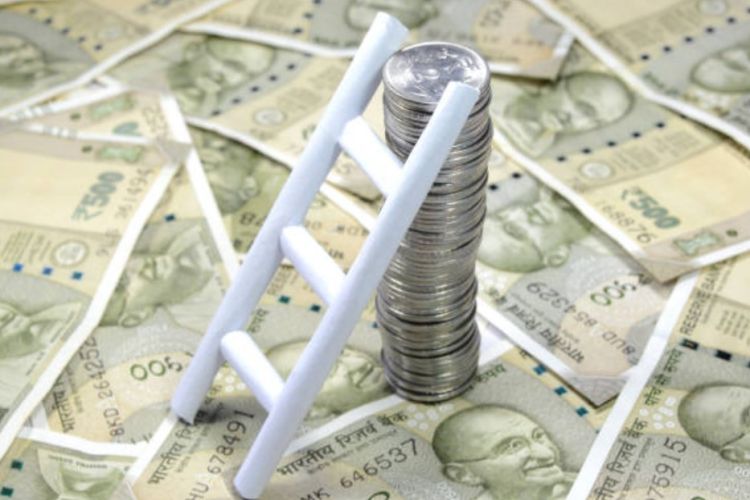India’s household savings: Indian households have long been known for their financial prudence. For decades, thrift shaped consumption choices, and savings were the bedrock of family security. That pattern is shifting. A quiet but consequential change is underway as households save less, borrow more, and tilt spending toward credit-fuelled consumption. The change marks a structural break, not a passing cycle, and its implications reach far beyond individual balance sheets.
Recent data from the Reserve Bank of India (RBI) and independent analysis by ICRA show how sharply household savings have weakened. India’s gross domestic savings rate fell from 34.6% of GDP in 2011-12 to 29.7% in 2022-23, a four-decade low. Household net savings—traditionally 60% of total savings—also declined.
READ | AI trade growth: How WTO’s new forecast changes dynamics
Household savings slide to multi-decade lows
Overall household savings (financial plus physical assets) slipped to 18.4% of GDP in FY23, below the decade average of 20%. The RBI reported a modest recovery in FY24, with net household financial savings rising to 5.1% of gross national disposable income as liabilities moderated. Yet the trend remains worrying. Early indicators for FY25 confirm that the fall is not a statistical distortion but a structural shift.
Bank deposits, once the default option for households, are losing appeal. A CRISIL analysis shows that while gross financial savings grew at 10.3% annually between FY21 and FY23, household financial liabilities surged at 30.1%. The gap is striking. Households are borrowing aggressively even as their net savings shrink.
Credit-fuelled consumption gains ground
The shift in behaviour is clear. Home loans, auto loans, personal credit, and buy-now-pay-later (BNPL) products have become mainstream. The appeal of easy financing has expanded consumption and brought new assets within reach—homes, vehicles, gadgets. But it has also reduced the margin available for precautionary savings.
The RBI, in its Financial Stability Report, warned that rising household leverage warrants close monitoring, given the exposure to interest-rate cycles and employment volatility. When liabilities grow faster than savings, households become vulnerable to shocks—job loss, medical emergencies, inflation spikes, or income disruptions. A strong household buffer is also a key pillar of macroeconomic resilience.
Markets rise, finfluencers multiply
India’s capital markets have grown rapidly. Mutual fund assets under management touched new highs in 2024 as retail participation expanded. Much of this enthusiasm has been driven not by institutional advice but by a new ecosystem of financial influencers, or finfluencers, who simplify market concepts for millions.
Finfluencers have democratised financial information, but the risks are stark. Only a small share of them are registered with SEBI as investment advisers or research analysts. The rest operate outside regulatory oversight. In a country where financial literacy remains low, households may be taking more risk than they understand, pulling money out of bank deposits and into volatile assets.
Aspirations rise, buffers shrink
For urban, salaried households, incomes have risen. So have aspirations and expenses. Housing, education, healthcare, and lifestyle spending have surged. With a growing share of income committed to EMIs and personal credit, the pool of discretionary savings is shrinking.
Household-level surveys show rising consumption but declining net savings among urban families. What was once a surplus is now a stretch. The pattern resembles a shift from “surplus to survival”—households earn more, aspire more, but save less.
Time to rebuild the household safety net
The RBI Governor has flagged the need for banks, regulators, and policymakers to adapt to this behavioural shift. The old model—where households defaulted to bank deposits and small-savings schemes—no longer holds. Nudging households back toward disciplined saving will require better product design, stronger financial literacy, and closer supervision of the credit ecosystem.
India’s ambition to become a $10-trillion economy rests on the stability of individual households as much as on corporate investment or government spending. Consumption can drive growth, but resilience requires savings.
India is witnessing changed consumer behaviour shaped by credit, aspirations, and capital-market enthusiasm. But a weakening savings buffer creates vulnerabilities that could amplify future shocks. Policymakers must strike the right balance between enabling consumption and strengthening household financial security.
Savings may sound old-fashioned in an era of rapid credit expansion. Yet they remain the silent guardian of economic resilience. The erosion of household buffers deserves attention not just in policy documents but in everyday financial decisions. If India ignores the retreat of savings, it may one day face a crisis not of growth, but of stability.

